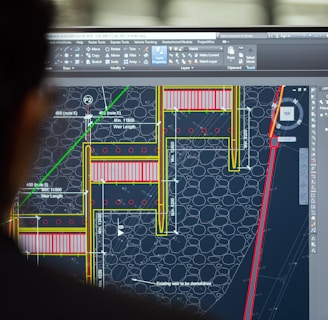Zero-Interface Applications: The Era of Invisible Softwar
7/1/20252 min read


Introduction:
Imagine software so seamless, you don’t even realize you’re using it. No buttons. No dashboards. No screens. Just pure functionality that integrates with your behavior, environment, and intentions. Welcome to the world of Zero-Interface Applications—where technology blends into the background and gets out of your way.
In 2025 and beyond, as voice assistants, sensors, AI models, and smart environments evolve, the traditional concept of a software "interface" is starting to disappear.
1. What Are Zero-Interface Applications?
Zero-Interface (Zero-UI) Applications are systems designed to deliver value without requiring a graphical or visible user interface. They rely on:
Voice commands
Sensors and IoT devices
AI prediction models
Gesture recognition
Ambient computing
Instead of tapping a screen or clicking a mouse, the software interprets your actions and responds contextually.
2. Real-Life Examples of Zero-UI in Action
Smart Fridges that reorder groceries when supplies run low
Voice assistants that book appointments based on your tone or schedule
Wearables that trigger health alerts to doctors before symptoms arise
Automated lights that adjust to mood and weather without input
These tools don’t require screens—they require intelligence.
3. Why the Shift Toward Invisiblity?
As attention spans shrink and device fatigue rises, users crave frictionless experiences. Zero-interface software:
Reduces cognitive load
Enables multitasking
Creates seamless daily routines
Enhances accessibility for differently-abled users
We’re moving toward a world where people want outcomes—not clicks.
4. Challenges in Building Zero-Interface Software
Creating invisible software is no easy feat. Challenges include:
Context-awareness: Understanding when to act and when not to
Privacy: Software that’s always listening or sensing raises ethical concerns
Error handling: Without a UI, how does the user know what went wrong?
User trust: Invisible systems must still be explainable and transparent
These systems require deeper levels of design thinking than traditional UI/UX models.
5. The Role of AI, ML, and Contextual Computing
AI and machine learning are the engines behind Zero-UI. They:
Interpret user behavior and context
Predict needs before they’re spoken
Learn preferences over time
Edge AI (processing data locally on devices) will also be essential to reduce latency and preserve privacy.
6. Industries Being Transformed by Zero-Interface Design
Healthcare: Ambient monitoring, automatic diagnostics
Retail: Checkout-free stores, AI-powered personalized shopping
Smart Homes: Gesture and voice-controlled living environments
Automotive: Self-regulating climate, adaptive entertainment, predictive maintenance
Zero-UI is especially valuable where eyes and hands are occupied—or simply unwelcome.
7. Designing for a World Without Screens
Developers must think beyond UI/UX and focus on:
UXD (User Experience Design) rooted in anticipation and response
Ethical AI design to avoid intrusive automation
Multi-modal feedback like haptics, audio, or environmental cues
Designers become behavioral architects more than visual artists.
8. Future Outlook: The Invisible Software Movement
In the next 5–10 years, expect a boom in:
Contextual computing
AI-as-a-service embedded into everyday objects
Sensor-first platforms
Silent software ecosystems
What the GUI did for the 1990s, Zero-UI will do for the 2030s.
Conclusion:
The future of software may be no software at all—at least not in the visible sense. Zero-interface applications represent a shift from users adapting to tools to tools adapting to users. It’s the ultimate evolution of user experience: silent, smart, and seamlessly embedded into life.
At Staydify, we believe understanding this transformation is critical for IT professionals, developers, and business leaders. As we build smarter tools, let’s not forget—sometimes the best interface is no interface at all.

